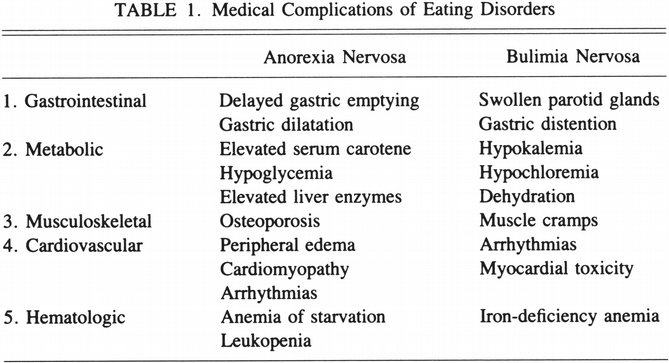Celebrity Diet
now browsing by tag
How Celebrities Stay Thin

Did you really think they were born that way? Come on now. It doesn’t come easy for them. Reese, Gwenneth, they work on staying thin everyday. In fact, it is a main focus of their lives. Why? Because they want THIN so much. Their careers depend on staying thin. Talk about motivation!
“Nothing tastes as good as skinny feels.”-Kate Moss
Not only do they need to stay skinny-minni for their movie careers, they also don’t want to be viewed as the heavy actor in Hollywood amongst a sea of thin people. Fat is NOT where it’s at on the silver screen.
A life being worried about every calorie you consume sometimes leads to eating disorders. Everyone knows that the Olsen twins have battled anorexia nervosa for years, and Mary Kate was admitted to an eating disorder rehab facility as she was starving herself to death.
Demi Lavato has openly admitted to seeking treatment for bulimia. Amanda Byrnes has always felt the pressure to stay thin for Hollywood and struggles daily saying she has an eating disorder. Lady Gaga told Maria Shriver in an interview that she has used bulemia as a way to stay thin.
In Victoria Beckham’s book Learning to Fly, she said that her management pressured the Spice Girls to be super thin leading Victoria to an eating disorder. I wouldn’t be surprised if she still was battling with food issues looking at this stick-thin woman.
Stacy London, while telling woman What Not To Wear, has suffered with bulimia and anorexia nervosa to stay ultra skinny.
I read an interview with Teri Hatcher who was agonizing with a decision to eat a 60 calorie fudgesicle. Who would be surprised to learn that she suffers with anorexa nervosa?
Lindsay Lohan told a Vanity Fair magazine interviewer that she makes herself sick to stay thin (bulemia?).
Kelly Clarkson said in high school she was bulimic, and now that she is having a hard time losing the baby weight and getting so much SHAMMING from the press, will she fall back on her old bad habits?
Katie Couric admits that she was bulimic in college and for a couple of years after that.
Jennifer Lopez – What She Eats
Hydration
Water throughout the day
Breakfast
BodyLab TastyShake Berry Berry Good smoothie
1 scoop of BodyLab TastyShake
3/4 cup strawberries
1/4 cup blueberries
1/4 cup raspberries
1/4 cup Greek yogurt
1/4 tsp. cinnamon
1/4 tbsp. honey
1/4 tsp. fresh lemon juice
1/4 cup ice cubes
Lunch
Kale salad with queso
1 bunch of kale, large stems removed and leaves finely chopped
2 tbsp. toasted pumpkin seeds
2/3 oz. crumbled queso
2/3 tbsp. fresh lemon juice
2 tbsp. extra-virgin olive oil
1/3 of a large shallot, minced, sea salt to taste
Snack
A medium-size apple
Dinner
1 boneless, skinless grilled chicken breast with:
1/2 cup sautéed brussels sprouts
1/2 cup baked yams with sea salt
Dessert
Chocolate chip cookie
Katherine McPhee almost destroyed her vocal cords by regurgitating her food (bulimia).
Jamie-Lynn Sigler said she had exercise bulimia.
Candance Cameron Bure wrote in her book Reshaping it that she battled for years with bingeing and purging after Full House ended.
Kate Beckingsale opened up about her anorexic past and once got down to 70 pounds. It took multiple daily therapies with a eating disorder specialist to fight her disorder.
Ashlee Simpson says she battled with anorexia after taking ballet and being around and learning from other anorexia sufferers.
Portia DeRossi opened up about her bingeing, purging and anorexia in her memoir Unbearable Lightness.
Other Hollywood stars say that they control their calories by eating the same thing everyday. I saw an interview with Reese Witherspoon who said she eats a 1/2 bagel with 1 tablespoon of peanut butter for breakfast, a small salad with no dressing for lunch, and maybe grilled chicken and salad for dinner…everyday…unless she goes out to eat and she may splurge on the calories.
When Brooke Burke was co-hosting the show Dancing With The Stars, she said in an interview that she also ate the same thing everyday which included a small breakfast of fruit, a giant salad with salmon for lunch and a smaller salad for dinner. For snacks she ate something like 5 walnuts…it was very little. In fact if both Reese and Brooke ate more than 1100 calories per day, I would be surprised.
Plus they all may get a little help from their doctors in the form of diet pills. Phentermine has been a favorite appetite suppressant used for years.
And if there is a movie role coming up that an actor has to lose weight for, they will go on liquid fasts or all soup diet losing sometimes a staggering 20 pounds in two weeks.
I have listened to male actors who had to lose a lot of weight for a movie role, and they admit to hours of exercise and eating maybe 600 calories per day. It’s also called starvation dieting. Yikes!
Celebrities don’t just diet, they also exercise at least 5 times a week and not just for 30 minutes. They will spend 4 hours getting their “burn” on.
I was amazed to hear Kendra Wilkinson, who recently had a baby and is going through a messy and painful divorce, that she is getting through by concentrating on her dieting. What?! She is getting through this difficult time by putting her diet first? See how the celebs keep their diet a number one priority.
• Up to 30 million people of all ages and genders suffer from an eating disorder (anorexia, bulimia and binge eating disorder) in the U.S.A.
All this eating disorders isn’t just happening to the Hollywood stars, but is also happening to some of your friends. I remember female friends in high school who could throw-up at a drop of a dime. I use to think they had really sensitive stomachs, and I observed the same thing in college. Pukers! Pig out and barf! The skinny girls were darn good pukers. Now I know, this was just bulimia.
These same women, if they have not been able to control their eating disorders by now, have badly eroded teeth. Most have had to had their teeth capped from all the stomach acid eating away at their enamel.
Other detrimental effects to the health of people that have eating disorders:
- Heart problems
- Osteoporosis
- Liver complications
- Depression
- Withdrawal from social activities
- Suicide
Eating Disorders Statistics
(Source: http://www.anad.org/get-information/about-eating-disorders/eating-disorders-statistics/)
General:
• Almost 50% of people with eating disorders meet the criteria for depression.
• Only 1 in 10 men and women with eating disorders receive treatment. Only 35% of people that receive treatment for eating disorders get treatment at a specialized facility for eating disorders.
• Up to 30 million people of all ages and genders suffer from an eating disorder (anorexia, bulimia and binge eating disorder) in the U.S.A.
• Eating disorders have the highest mortality rate of any mental illness.
Students:
• 91% of women surveyed on a college campus had attempted to control their weight through dieting. 22% dieted “often” or “always.”
• 86% report onset of eating disorder by age 20; 43% report onset between ages of 16 and 20.6
• Anorexia is the third most common chronic illness among adolescents.
• 95% of those who have eating disorders are between the ages of 12 and 25.
• 25% of college-aged women engage in bingeing and purging as a weight-management technique.
• The mortality rate associated with anorexia nervosa is 12 times higher than the death rate associated with all causes of death for females 15-24 years old.
• Over one-half of teenage girls and nearly one-third of teenage boys use unhealthy weight control behaviors such as skipping meals, fasting, smoking cigarettes, vomiting, and taking laxatives.
• In a survey of 185 female students on a college campus, 58% felt pressure to be a certain weight, and of the 83% that dieted for weight loss, 44% were of normal weight.
Men:
• An estimated 10-15% of people with anorexia or bulimia are male.
• Men are less likely to seek treatment for eating disorders because of the perception that they are “woman’s diseases.”
• Among gay men, nearly 14% appeared to suffer from bulimia and over 20% appeared to be anorexic.
Media, Perception, Dieting:
• 95% of all dieters will regain their lost weight within 5 years.
• 35% of “normal dieters” progress to pathological dieting. Of those, 20-25% progress to partial or full-syndrome eating disorders.
• The body type portrayed in advertising as the ideal is possessed naturally by only 5% of American females.
• 47% of girls in 5th-12th grade reported wanting to lose weight because of magazine pictures.
• 69% of girls in 5th-12th grade reported that magazine pictures influenced their idea of a perfect body shape.
• 42% of 1st-3rd grade girls want to be thinner (Collins, 1991).
• 81% of 10 year olds are afraid of being fat (Mellin et al., 1991).
For Women:
• Women are much more likely than men to develop an eating disorder. Only an estimated 5 to 15 percent of people with anorexia or bulimia are male.
• An estimated 0.5 to 3.7 percent of women suffer from anorexia nervosa in their lifetime. Research suggests that about 1 percent of female adolescents have anorexia.
• An estimated 1.1 to 4.2 percent of women have bulimia nervosa in their lifetime.
• An estimated 2 to 5 percent of Americans experience binge-eating disorder in a 6-month period.
• About 50 percent of people who have had anorexia develop bulimia or bulimic patterns.
• 20% of people suffering from anorexia will prematurely die from complications related to their eating disorder, including suicide and heart problems.
Mortality Rates:
Although eating disorders have the highest mortality rate of any mental disorder, the mortality rates reported on those who suffer from eating disorders can vary considerably between studies and sources. Part of the reason why there is a large variance in the reported number of deaths caused by eating disorders is because those who suffer from an eating disorder may ultimately die of heart failure, organ failure, malnutrition or suicide. Often, the medical complications of death are reported instead of the eating disorder that compromised a person’s health.
According to a study done by colleagues at the American Journal of Psychiatry (2009), crude mortality rates were:
• 4% for anorexia nervosa
• 3.9% for bulimia nervosa
• 5.2% for eating disorder not otherwise specified
It Not Just Celebrities That Have to Stay Thin
Other professions like jockeys have to keep their weight down. In Laura Hillenbrand’s great book Seabiscuit she goes into detail about the methods jockeys use to maintain their weight as in calorie restricting, not drinking water, and purging.
I got together with a couple of friends last summer who I haven’t seen for a long time. One of my friends whispered in my ear that our other friend was too skinny. I looked over and did see that she has a very svelte figure. I was instantly envious. She was probably looking at me thinking, wow, Terry put on some pounds! When I got close enough to say hello, I saw my ultra-thin friend had teeth that showed definite erosion, possibly from purging. I, embarrassed that I probably knew her secret for keeping uber thin, looked away.
So, let’s all agree that there is nothing wrong with having a size 8, 10, 12 pants. That maintaining a size zero takes too much effort and well, it may not be healthy. Let’s eat mostly veggies and fruit, stay away from the bread and pasta, skip sugar unless it’s your birthday, and drink plenty of water. If you are eating correctly your body will know what size it wants to be. Embrace your curves if that is what God gave you and enjoy life.
Next time you see a skinny celebrity don’t envy them, feel sorry for them.
If you would like a Free Download of the Military Diet Plan (How to lose up to 7 pounds in 3 days without starving yourself), please fill out the form below.
Thank you for reading.
 Terry Ryan, Health Blogger and Internet Marketer
Terry Ryan, Health Blogger and Internet Marketer











 D5 Creation
D5 Creation